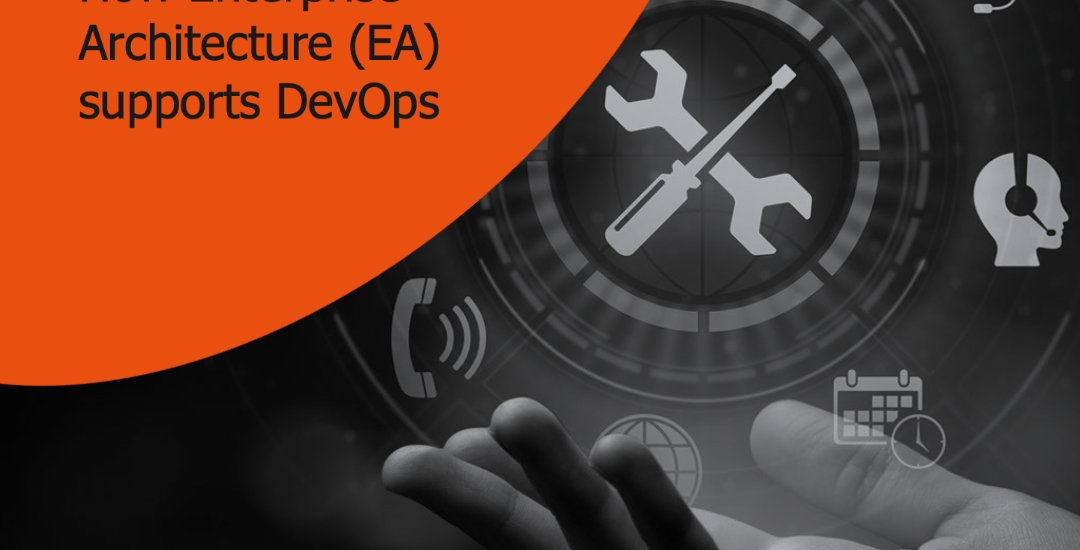- 2023-03-22
- Posted by: Adrian Williams
- Categories: DevOps, IT Architecture

Why is Enterprise architecture important in an agile, DevOps world?
The value of Enterprise Architecture
As discussed in the What is Enterprise Architecture (EA)? (techtarget.com) blog, Enterprise Architecture creates and drives the implementation of an organisation’s architectural blueprint. It describes all the architecture components that make up the organisation (the business, application, organisational, infrastructure, data, and information architectures) as well as how these architectural components form a cohesive solutions architecture framework. If managed correctly EA will enable organisations to plan, design, and implement an optimal structure and operating environment given each organisation’s strategic, tactical, and operational goals.
It is important to note here that enterprise architects and solutions architects do not work at cross purposes to each other but rather complement each other. They are both required to work together synergistically to maximise the value that organisations can generate through the use of technology. Although there are overlaps between enterprise architecture (EA) and solutions architecture (SA) they have different functions and depend on each other as the SAs take the abstract strategy developed by EAs and turn them into operational solutions. (Solution Architecture – The Definitive Guide | LeanIX).
Enterprise architecture helps businesses that are migrating to an agile operating environment by focusing on bringing both legacy applications (typically monolithic applications) and processes together with newer agile microservices based applications and processes in an attempt to form an optimal operational environment.
The value of DevOps
As described in earlier blogs, development, and operations (DevOps) describe the processes which can be used to integrate development, quality assurance, and IT operations and provide the tooling needed to deliver software solutions far more rapidly and consistently while ensuring the compatibility of all software solution components. This is achieved by breaking up the software solutions architecture into self-contained software components (or services) that enable software solutions providers to deliver a self-contained set of software services while ensuring that each component is interoperable with all the other services.
The synergy between enterprise architecture and DevOps – the need for speed
So, in summary (reference: The Relationship Between Enterprise Architecture and DevOps (leanix.net)):
- “DevOps” (Development + Operations) is an offset of the Agile revolution dedicated to increasing both time-to-market and quality-to-market.
- Enterprise Architecture (EA) ensures that DevOps teams are integrated in mutually beneficial manners to ensure that processes (especially those that are automated) are built using relevant technology and data sources.
- EA Management is a modern discipline equipped to streamline three core elements of DevOps throughout large-scale environments: automation; analytics; and sharing.
As described in LeanIX blog (The Relationship Between Enterprise Architecture and DevOps (leanix.net)), “agile organisations must work on maximising deliverable outputs by minimizing wasteful processes. It is therefore all about speed. Speed, however, means two different things to software developers and operations personnel. For those tasked with engineering 24/7 web-based services, it involves being able to frequently test and release near-invisible updates without delay. If the service is up and running, so too must the developers. This leads to a pressurized and highly reactive environment with little time ever actually available to evaluate actions for long-term significance. It is typically therefore left to operations teams to anchor every step of agile software development processes to essential business standards. For these individuals, the pace of agile development means a greater likelihood that their company’s product offerings are going to be constructed in the wrong ways. Operations personnel are unable to slow the demands of customers so they must find nimble ways to tag all updates to security, software, and market standards without noticeably affecting delivery times.”
This is where enterprise architecture makes a difference. The management function of a typical enterprise architecture practice provides all stakeholders with the transparency they need to make actionable decisions on the deeply integrated architecture patterns that run enterprise-wide DevOps processes. Using EA management typically provides three types of benefits.
Automation related benefits.
Automation is an indispensable component of DevOps and Agile organisations. It enables them to scale upwards in a competitive manner and is applied at all levels of modern enterprises. EA Management utilises the best practices of all architectural domains (Information, Data, Security, etc.) to test whether reliable information and technology is being fed into autonomous development cycles.
Analytics related benefits.
Continual improvement of processes is an essential element of DevOps and analytics is key to enabling this. The 24/7 operational pressures of Agile environments means that feedback has to be given and received as efficiently as possible. EA Management Tools tracks metrics related to the performance of technology and processes as well as the personnel responsible for its maintenance.
Sharing related benefits.
Sharing ideas, problems, skills, knowledge, and winning processes is an important aspect of DevOps. It enables effective quality assurance and standards governance and enables modern enterprises to collect best practices from development and operations teams (both internal and external) to maintain an optimal set of Agile tactics. EA Management Tool’s collaborative functionality are a very good way of attracting time-to-market and quality-to-mark insights in real and near real time.
In WiRD’s experience when EA management is done properly in DevOps environments., significant improvements in efficiency and effectiveness follows. What has your experience been with regards to using EA management in agile environments? How effectively does it work with your DevOps practices? Please share your experiences with WiRD and each other by commenting or interacting on LinkedIn
